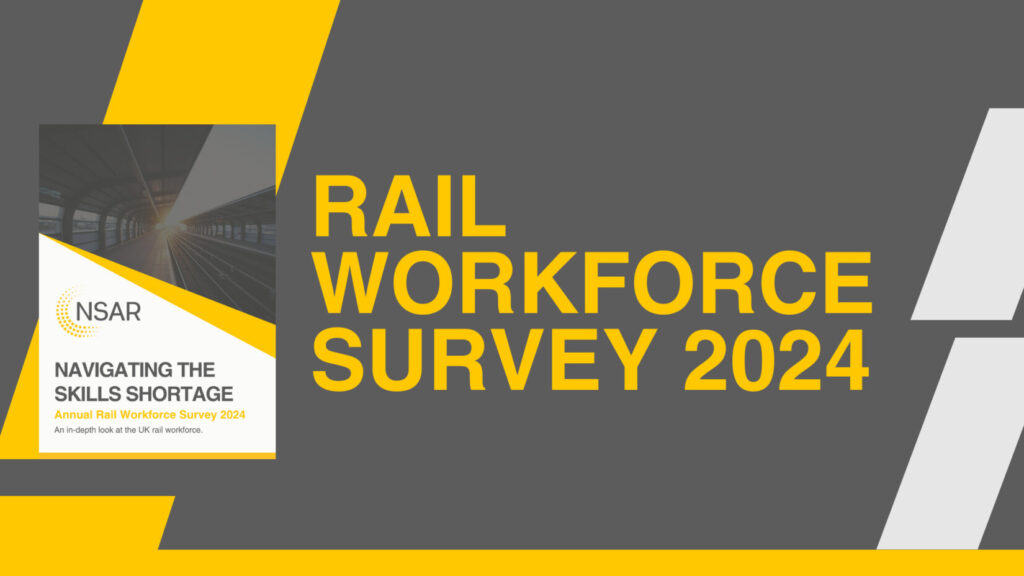To better understand the UK rail workforce, NSAR conducts an annual comprehensive survey of industry professionals.
Overview
NSAR has been conducting an annual comprehensive survey of industry professionals since 2016. The analysis highlights the current profile of the workforce, compares statistics to those gathered in previous years and makes recommendations for action on what we believe are the top issues facing the sector.
Process
Each year railway organisations across the industry contribute to the survey by submitting their workforce data, which is completely anonymised and GDPR compliant. 2024 again saw a high level of data provided by employers. NSAR collated the information received directly from employers, in addition to data from the Sentinel database and from the Office of Rail and Road, to produce a workforce profile covering 220,501 individuals – providing over 95% coverage across the sector including the supply chain.
Headline findings
- The workforce in rail has decreased over the last year by 9.4% to 220,500, predominantly in the supply chain
- The number of people leaving through retirement and other forms of attrition could be up to 90,000 by 2030
- The average age of rail employees is 44 years, compared to 45 years in 2025
- A third of the rail workforce is aged 50 years and older
- The proportion of workers aged under 25 has increased from 4.7% in 2023 to 6.3% in 2024, an increase of 20%
- 17% of rail employees are women, compared to 16% in 2023
- 14% of rail employees are from an ethnic minority background, compared to 12% in 2023 and a national average of 19%
Benefits
The survey enables NSAR to build the most complete and accurate representation of the UK rail workforce. This helps the industry understand current and future workforce gaps and develop strategic workforce plans to ensure a pipeline of skilled employees is available.



